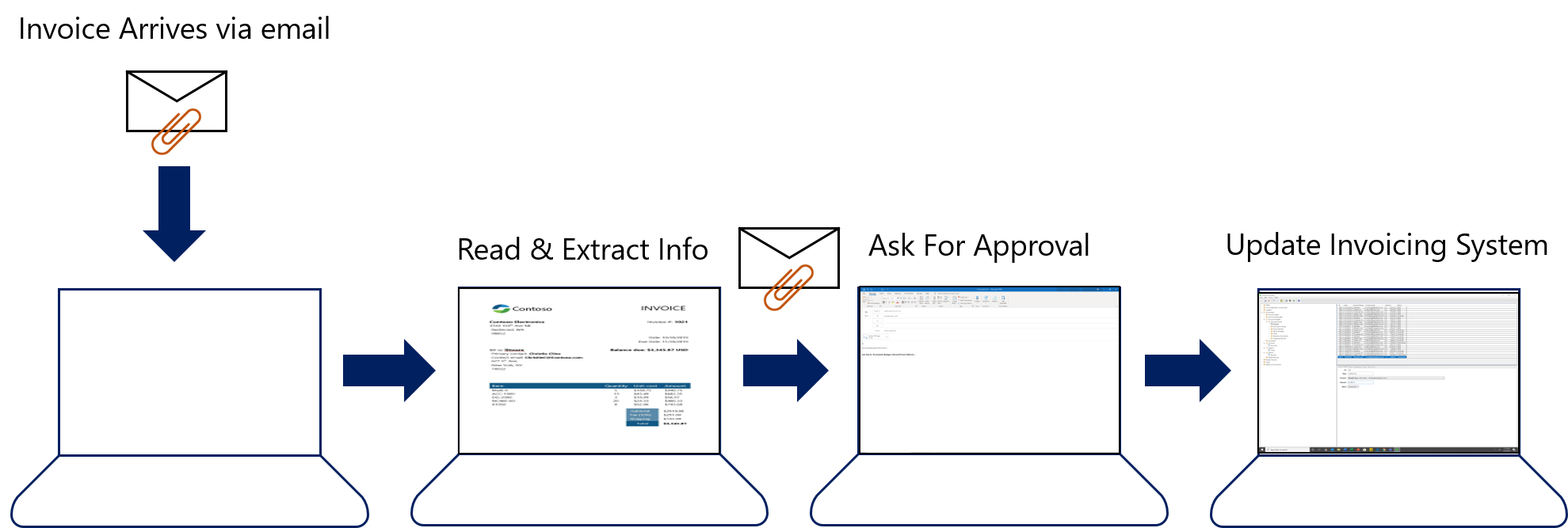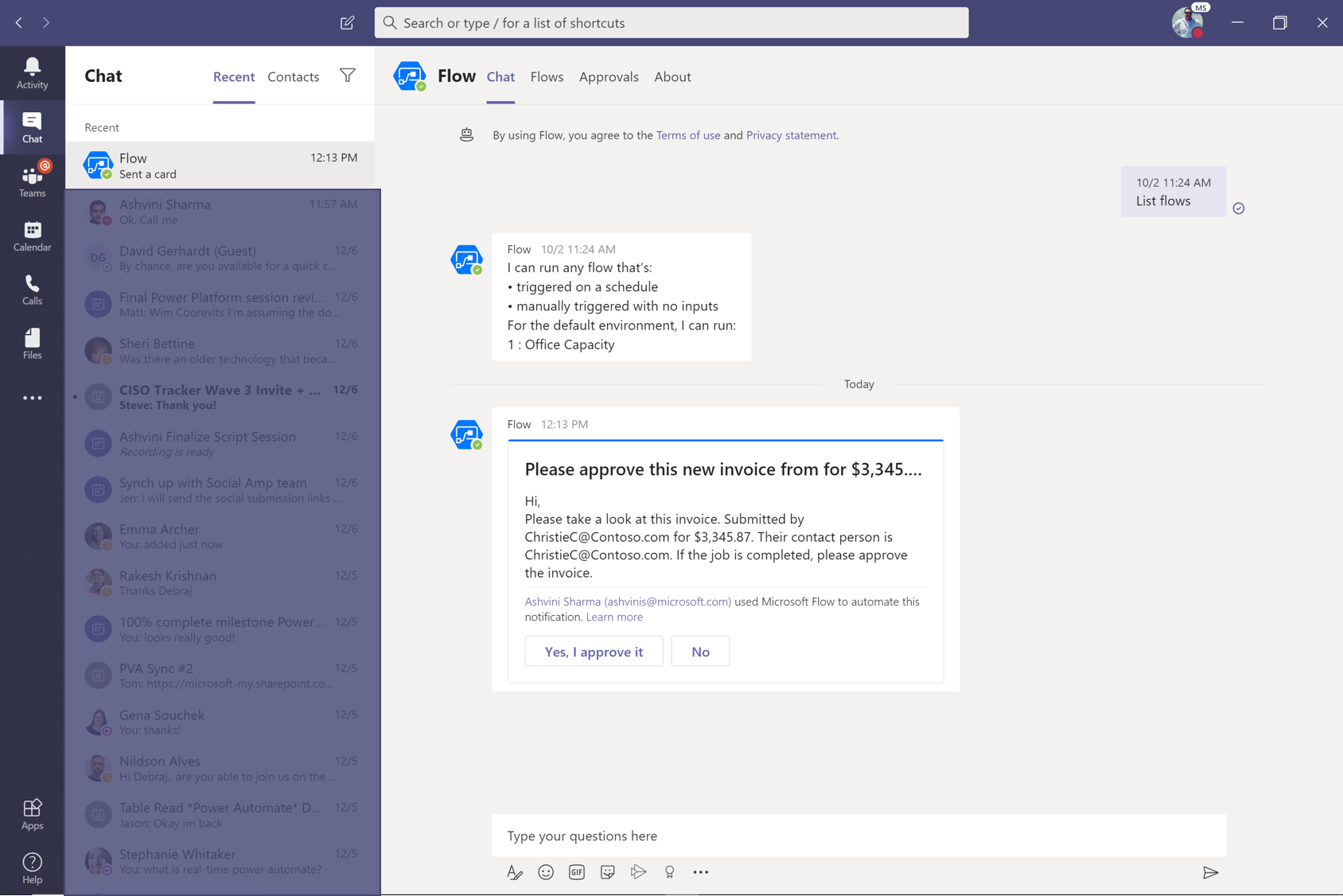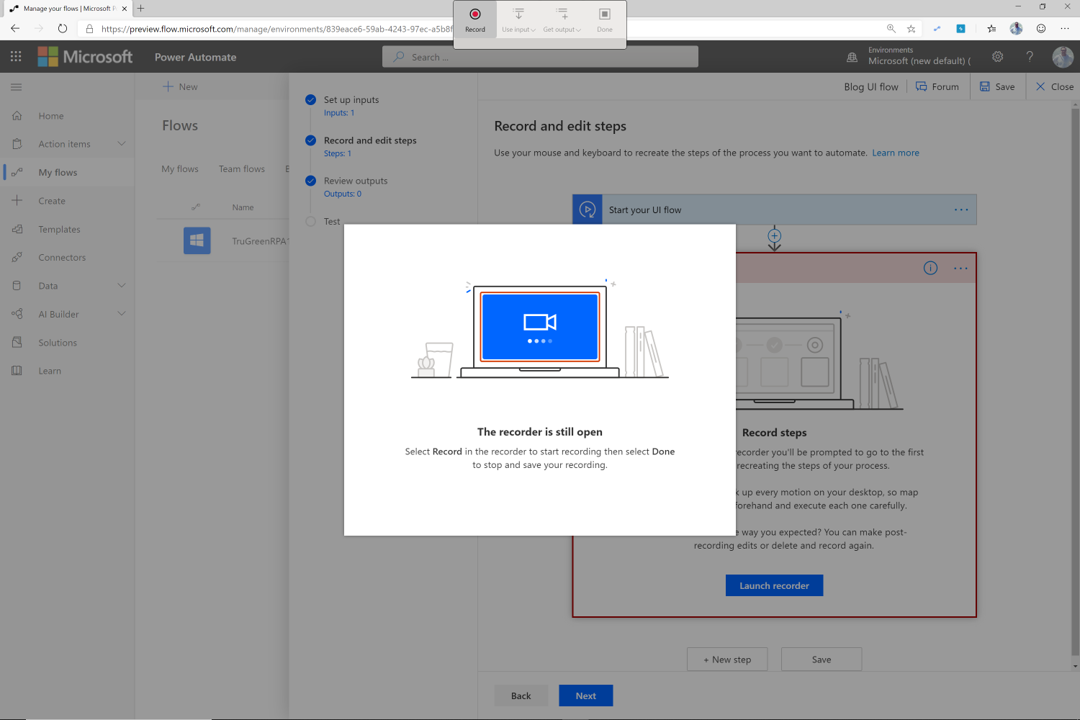Digitally Transform Your Enterprise with Power Automate: Leveraging Robotic Process Automation to Modernize Legacy Processes
At Microsoft Ignite 2019, we announced the re-branding of Microsoft Flow to Microsoft Power Automate. We also added Robotic Process Automation (RPA) to Power Automate by launching the public preview of the UI flows connector. RPA is a significant addition to Power Automate enabling seamless, end-to-end automation which can be leveraged across an organization’s entire digital estate, whether assets are located in the cloud or on-prem, and whether you choose to automate modern API-based applications or applications which do not have an API. More technical Power Automate users or IT users have in the past created custom APIs or connectors to extend automation to applications without APIs. Now, with the addition of RPA, non-technical Power Automate users can also add automation to non-API applications. RPA, plus native integration with widely used services such as Teams, and the access to powerful AI tools, allows Power Automate to provide solutions for use cases previously requiring multiple applications, process steps, and time to address. In today’s blog, we’ll demonstrate the immediate impact Power Automate can have on your organization’s efficiency by examining a typical invoicing process.
The Benefit of Automated Invoicing
As we discussed in our previous blog, there are several factors that contribute to the costs associated with invoicing including:
- labor
- systems
- outsourcing
- overhead
- other general accounts payable processing costs.
A detailed study found average costs per invoice range from $2-$10 based on how efficiently an organization handles the invoicing process. Clearly, a five-fold affect on costs has direct impact on an organization’s bottom line. Additionally, this $2-$10 cost range per invoice assumes invoices are accurately handled. Earlier research by Sterling Commerce discovered that the cost associated with an invoicing error jumps above $53 per invoice. The organizations paying only $2 per invoice are most efficient with the process, reducing the typical invoicing cost components and reducing or eliminating invoicing errors. As the Sterling Commerce study found, automating the invoicing process can lead to a 90% reduction in invoicing costs. Let’s show you how Power Automate can provide end-to-end automation for your invoicing process and help you realize some of the benefits of automated invoicing.
Automated Invoicing with Power Automate
A typical invoicing process may look like figure 1. An email arrives with the attached invoice. The email recipient must read over the invoice and look for the pertinent information and then depending on the amount of the invoice, the recipient must send it for further approval. Once the invoice is approved, someone must update the invoicing software being used with the information from the latest invoice. In many organizations, this invoicing software is often an older application that does not have an API. The entries to the software must be done manually. This multi-step process is of course time consuming and is not a high value task, yet fundamental for the business. Also, errors can occur in some of the steps, from simply mis-reading the invoice amount, to entering the wrong amount or customer information into the invoicing application. With Power Automate, this entire process can be done automatically, not only saving your employees time, but also reducing the potential for human error.

Figure 1. Typical invoicing process steps
Power Automate leverages over 300+ connectors including email services such as Microsoft Outlook . You can begin your automation by creating a flow that is triggered whenever an email arrives with an invoice attachment. You can narrow the specifics of an email that triggers the flow by choosing to trigger only when an email has an attachment and when the email subject includes the word ‘invoice’ as shown in figure 2.

Figure 2. Invoicing flow beginning with narrowed email trigger
The next step is to understand the contents of the attachment and extract pertinent information from the attachment. To do this, Power Automate uses the deep AI capabilities offered in AI Builder. To date, AI Builder comes with four pre-defined AI models including:
- Forms processing – enabling reading and saving information from standard documents
- Object detection – recognize and count objects in images
- Predict – predict if something will happen
- Text Classification – categorize text by its meaning so it is easier to analyze
For this invoicing example, the attachment can be read and understood by the AI Builder ‘Forms Processing’ model which extracts the pertinent information from the invoice form (figure 3).

Figure 3. Contoso Invoice form with AI Builder Forms Processing model extracting the pertinent information from the invoice
Based on the content of the invoice, you can decide which information is most important to extract. In our example of the Contoso invoice, we are extracting several values including the balance amount for the invoice. Many invoicing processes require an approval before payment is made. With Power Automate, approvals are also streamlined. Power Automate is natively integrated with today’s most widely used collaboration application, Microsoft Teams, and in our example, we send an approvals request to the finance department via Teams (figure 4).

Figure 4. Invoice approval request arrives in Teams
Once the invoice has been approved, the final step is to ensure the transaction is documented in the organization’s invoicing software. In many instances, these invoice applications have been used for many years and pre-date APIs. Also, because of the importance of invoicing software to catalogue and maintain fundamental financial transaction data, organizations are hesitant to disrupt their business to replace the software with newer systems. While Power Automate has always empowered users to create custom APIs or connectors for these non-API systems, Robotic Process Automation offers an easy and fast method for less technical users to enable automation for applications without APIs. Power Automate’s new ‘UI flows’ feature empowers users to simply record their interaction with a UI and then embed that recording into a flow (figure 5). With the addition of UI flows, Power Automate offers organizations one service which bridges automation across the enter digital estate, bringing modern efficiency to processes that were previously tedious.

Figure 5. UI flows recorder to record click-steps from user interaction with UI
Now, with Power Automate, a time-consuming invoicing process, often prone to error, and costing organizations several dollars per invoice, can be fully automated, improving efficiency, and greatly reducing potential errors.
Some Great Examples of Power Automate and the Power Platform
There were several sessions at Microsoft Ignite which highlight many of the incredible possibilities with Power Automate and the broader Power Platform. In fact, one of our sessions goes in-depth on the invoicing automation example discussed in this blog. Check out some of these other sessions which demonstrate how Power Automate and the Power Platform can transform and modernize your organization to meet the demands of today’s rigorous business environment.
- Unleashing your organization’s creativity and innovation with a deep dive into the Microsoft Power Platform
- Inside the Microsoft Power Platform | Power Apps, Power Automate, Power BI and more
- Intelligent automation with Microsoft Flow
- Introducing Robotic Process Automation (RPA) with Microsoft Power Automate: The End of swivel-chair automation
- Learn How Power Automate Is the perfect automation platform to streamline workflow processes across your entire IT ecosystem
- Empower everyone in your organization to drive digital transformation with the Microsoft Power Platform
- Power for ‘all’: How the Microsoft Power Platform is democratizing development
Enhance Your Digital Transformation with Power Automate
Let your organization start benefiting from powerful and secure automation. Be sure to join our growing Power Automate community and participate in discussions, provide insights, and even influence product roadmap. If you’re not already, be sure to follow the Power Automate blog to get news on the latest Flow updates, learn how Power Automate is a secure service, and read our whitepaper on best practices for deploying Power Automate in your organization. Also, be sure to check out the Power Automate tutorials page and our video channels hosted by Power Automate engineers who will demonstrate how to create sophisticated flows within a matter of minutes. Go to powerautomate.com, to get started with Power Automate today!
- A guide to building enterprise-ready flows
- Power Automate Community
- Power Automate Blog
- Power Automate Tutorials with Jon Levesque
- Power Automate Tutorials with Audrie Gordon
- Administering a PowerApps Enterprise Deployment Technical Whitepaper


